A New Heaven and a New Earth
The Conclusion of
H.E. Freund's The Ragnarok Frieze
Drawings and stills from Ragnarokfrisen af H.E. Freund,
© 1986 Denmark's State Museum
for Art
The action moves from right to left
Scroll up and down and side-to-side to the entire image |
[OTHER WORKS by H.E.
FREUND]
[POPULAR RETELLINGS]
[HOME]
|
[OTHER WORKS by H.E. FREUND]
[POPULAR RETELLINGS]
[HOME]
|
[OTHER WORKS by H.E.
FREUND]
[POPULAR RETELLINGS]
[HOME] |
Herman Ernst Freund's
The Ragnarök Frieze
The drawing of 1857 by H. Olrik with photographs below from
the book Ragnarokfrisen af H.E. Freund,
© 1986 Denmark's State Museum
for Art
[Click here for a
biography of the Artist and his work]
H.E.
Freund was the first Danish sculptor to treat Norse
mythology. Although his classical training prevented him from
creating a truly Nordic work,
he must be credited as one of the pioneer artists who sought
to
accurately portray the Nordic pantheon based on a
knowledge of the ancient Norse sources. His understanding of
the Edda may be misguided on certain
points by Finn Magnusen's scholarly opinions and
Adam Oehlenschläger's poetic liberties.
|
[OTHER
WORKS by H.E. FREUND]
[POPULAR RETELLINGS]
[HOME]
|
[OTHER WORKS by H.E. FREUND]
[POPULAR RETELLINGS]
[HOME]
|
[OTHER WORKS by H.E. FREUND]
[POPULAR RETELLINGS]
[HOME]
|
The Fate of the Gods and the World hang in the Balance
The Beginning of H.E. Freund's The Ragnarok
Frieze
Drawings and stills from Ragnarokfrisen af H.E. Freund,
© 1986 Denmark's State Museum
for Art
The action moves from right to left
Scroll up and down and side-to-side to the entire image |
|
All-Father, enthroned on a world and drawn by symbolical
griffins, comes gloriously, circled and garlanded by victories
and shining planets. A new heaven and a new earth is at
hand, under the mighty sceptre and purer reign of one greater
than Odin. |
Sphinxes
in front of his
seat refer to the mystery of
his being.
|
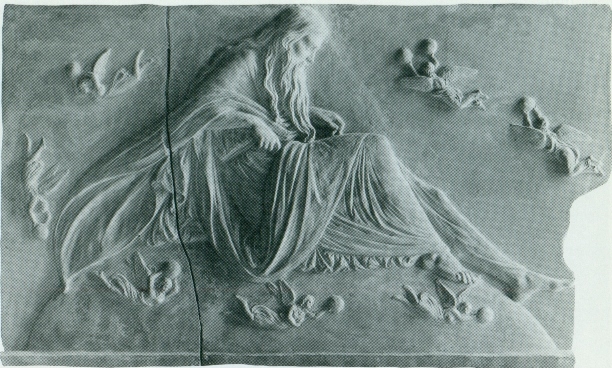 |
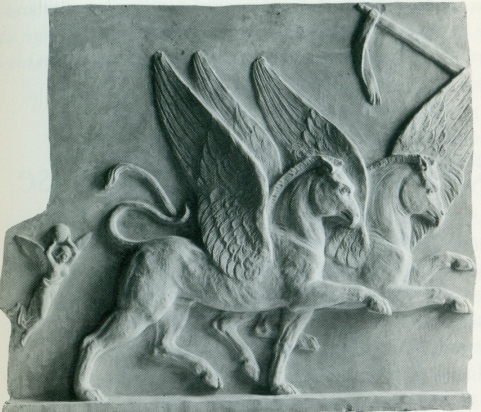 |
|
Muspel's sons, swarm forth from their winged ship Naglfar
with fiery torches.
Freund
depicts the fire
giants as
Africans.
|
Muspel
(also identified as Surtur) leads
the fire giants, Muspel's sons.
Muspel himself travels on a
sledge, drawn by
dragons. His head
is veiled, but he has
a flaming sword
in his hand portending the old world's conflagragation.
|
Winged Dragon's pull Muspel's sledge.
|
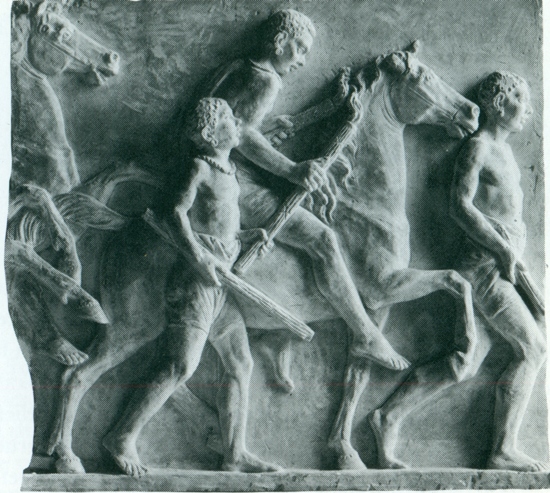 |
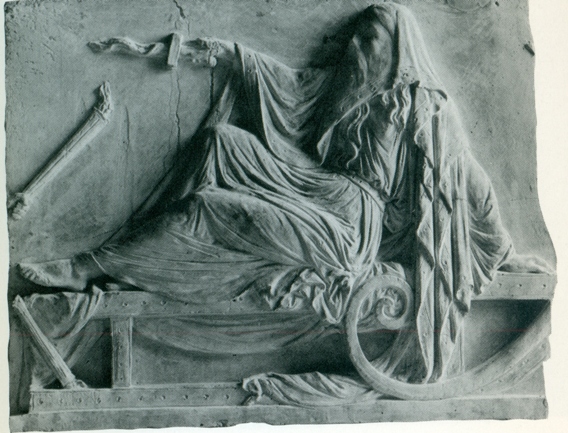 |
|
|
|
From the mountains, black elves swarm forth.
|
In Hel, the redbrown cock crows from the underworld. The
elderly Vala raises her hand at the fulfillment of prophecy.
|
Frost-giants [Hrim-thursar] lead the hounds of Hel. |
|
|
|
|
|
|
On a rock we see the giant eagle Hräsvelgr, who drives the
storm winds with its strong wing beats. |
The
Frost-giants now hasten to attack the Aesir, led by the
malignant Loki. |
Depicted with horns and bat wings,
Loki with the Giants storms toward the gods bridge.
The Jotuns are not fast enough for him,
therefore, Loki pulls the lead giant by
the hand. |
|
|
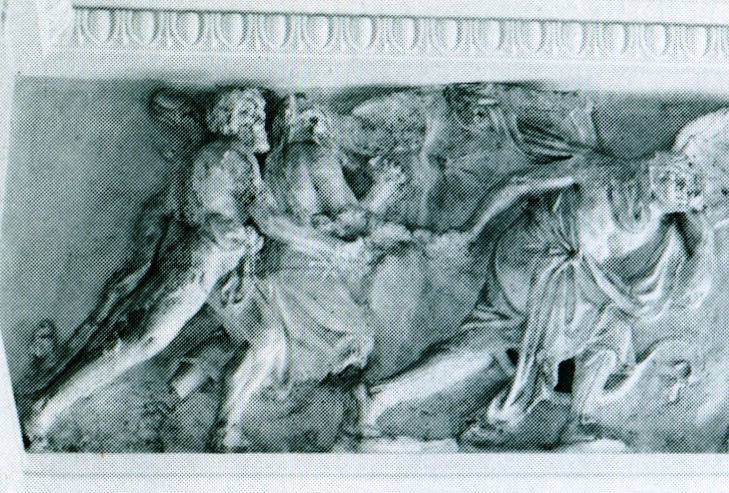 |
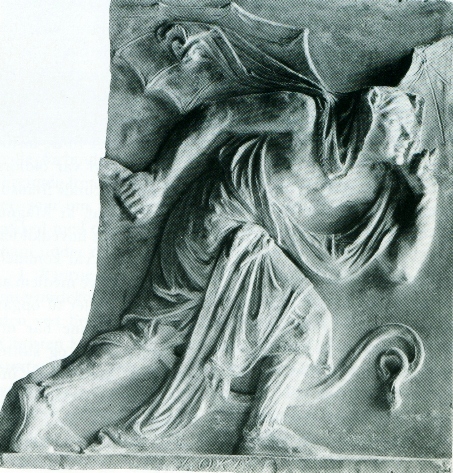 |
|
In front of the giants led by Loki, the Vanir, who had once fought
with the Aesir,
now break out again against their old foes
to fight the final battle.
|
The
Vanir follow their leader Njord into battle.
Njord, who was given to the Aesir as a hostage is now reunited
with his family at the end of days.
|
Njord leans back on his winged horse, held by one of
the Vanir, to cast a stone against Heimdall, the guardian of
Bifröst.
|
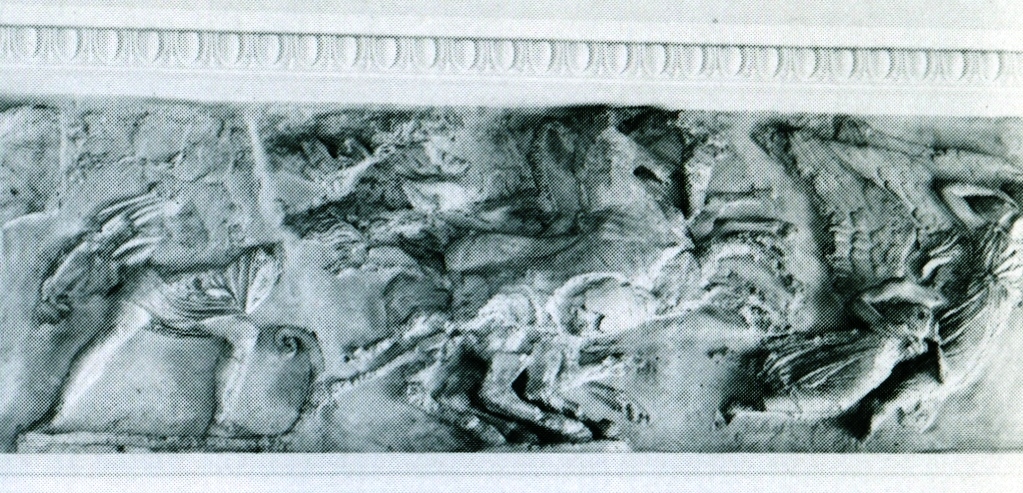 |
|
|
|
|
Heimdall
kneels on the Rainbow Bridge and blows into his Gjallarhorn.
|
Before Heimdall are grouped his nine mothers.
The first, struck by an arrow shot by one of the Vanir,
holds her hand in front of her face in pain.
|
Several
of Heimdall's mothers are entwined by the coils of the huge Midgard
Serpent,
who lifts its head up to fight with Thor. |
|
|
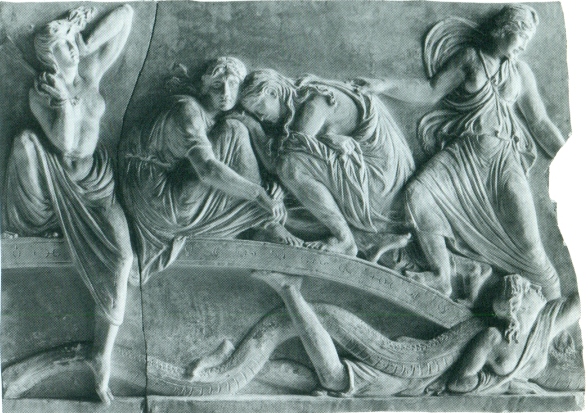 |
|
|
|
Thor swings his hammer Mjölnir against the Midgard serpent,
his belt of strength buckled about him.
|
Thor's carriage drawn by goats stands empty. Behind it, the
Fenris Wolf lurks, awaiting Odin's arrival. |
Odin,
king of the gods, comes riding on
his eight-footed
stallion Sleipnir,
with his sword
raised. The silent Vidar is at hand to avenge
him.
|
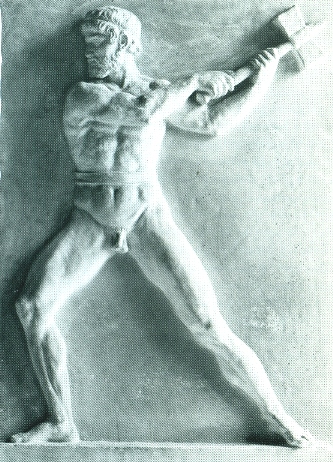 |
|
|
|
Odin is attended by a crowd of other gods and their
attributes.
|
They are attended
by the Valkyries, all
radiant with glittering wings.
|
Behind them,
the Einheries, the champions of the gods, press forward from
the gates of Valhall, led by Starkodder.
|
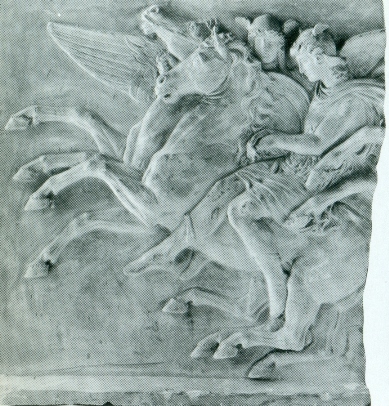 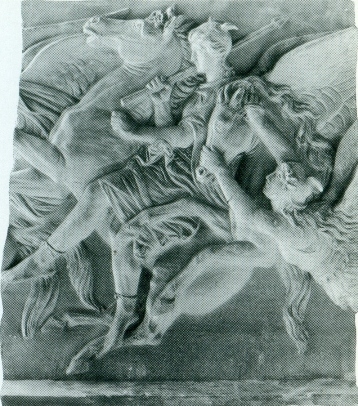 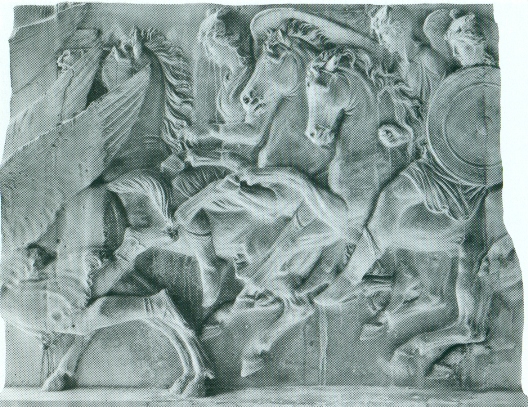 |
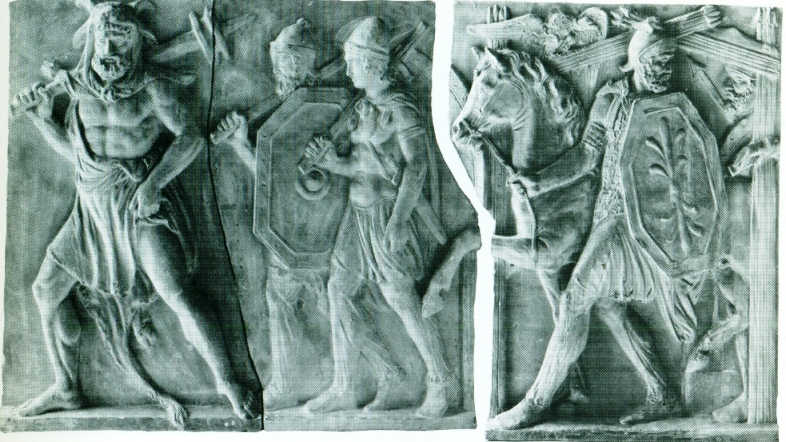 |
|
|
Freya's brother Frey,
with
the radiant image
of the sun
on his shield, races forth on his golden Boar,
Gullinbursti, followed by Skadi
(also identified as Gefion and Gerd) with an animal
skin around her
shoulders and about to draw
an arrow from her
quiver.
|
The mourning goddesses.
Frigg, Odin's wife, sits silently beside his
throne.
Hermod, the messenger of the gods, is at her side.
In Odin's high seat Hlidskialf, the rooster Gullinkambi
crows.
Freyja, with cats at her feet, sits on the opposite side,
crying and comforted by her two daughters.
To her right sits Sif,
the mighty Thor's wife. To
their right are three of Odin's shield maidens.
|
The winged Norns at the Well of Urd.
Urd, the Past, sits as Saga (the goddess of history),
inscribing the march of time on her golden tablets; Skuld the
Future, sits thoughtfully lost in dreams of things to come; Verdandi, stands
as the ever-present Now, holding the heavenly balance in
her scales. |
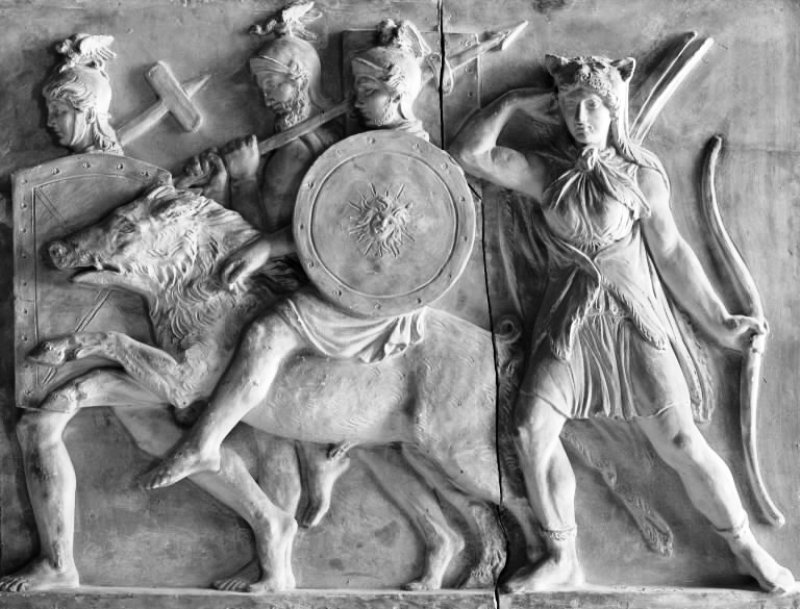 |
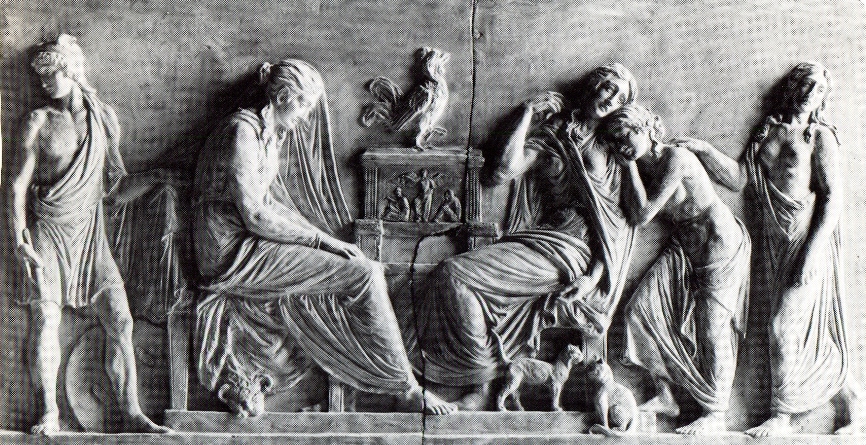 |
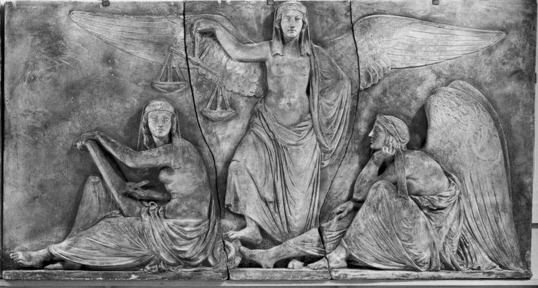 |
|
























